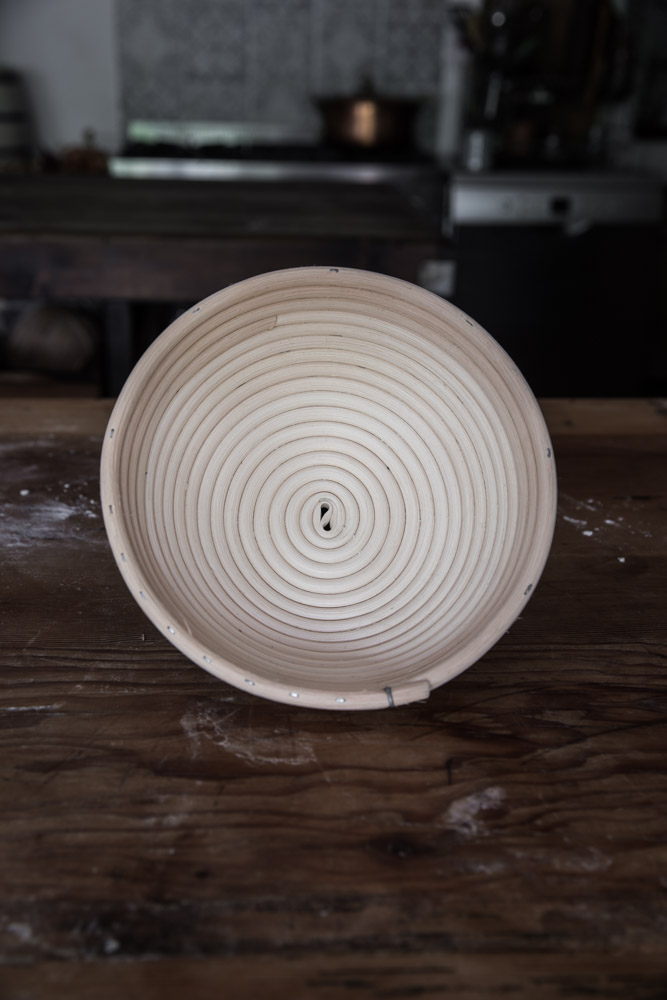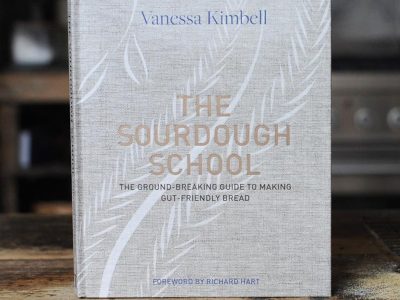
I’ve been excited for a while about a ground breaking project looking into the magical invisible world of sourdough microbes, and if you have been following me on social media you might have noticed that I have been in San Francisco for a few weeks last month. The things I had planned for the trip though didn’t quite turn out as planned due to the wildfires in Northern California, and sadly the conference I was speaking at had to be postponed. The organizers of the conference, who have the Sourdough Library in Belgium, arranged for the speakers to meet up and give a summary of the key points of our talks over breakfast, and I was lucky enough to meet and hang out for the day with Anne Madden, a microbiologist who is part of a team investigating the microorganisms found in global sourdough starters. We finished breakfast and headed downtown to Mission and bought lunch at Tartine. Between bites of sourdough, and the best banoffee pie, I asked Anne to tell me about her work, and what the findings from her current research might mean for sourdough bakers.
The Sourdough Project is a collaboration between laboratories from a number of universities. It is led by Rob Dunn’s lab at North Carolina State University, where Anne works as a postdoctoral research fellow. The study is looking at the diversity of microorganisms found in sourdough, and at differences between the microbe communities in starters made by bakers across the world. The project began in autumn of 2016, when an invitation was made to home bakers to send samples of their sourdough starters for analysis. Anne told me, ‘we are using culturing techniques, as well as advanced DNA technology, to understand what species are in these sourdoughs, and how they might be interacting to form the breads that we love.’ The response to that first call for starters was amazing, and the research group is now in the process of analysing the first round of 570 samples. They are finding, Anne says, a diverse range of yeast species, lactic acid bacteria and some acetic acid bacteria.
I asked Anne if The Sourdough Project was finding that the starter samples tended to have one dominant yeast species, with others being present but less abundant. She told me that this was the part of the study they were just beginning to look at. ‘The question that we’re really trying to get at with this global sourdough study is to understand, not just what species are in there, but what’s the relative abundance in relation to one another? Is it that one is dominating and there are a couple of others that may not be contributing that much, but they’re hanging in there, or are they all equally there, represented as a kind of equal community?’ she explains.
I was also interested to know if they were finding variation within the species Saccharomyces cerevisiae. ‘Yes, you can think of Saccharomyces cerevisiae, one species of yeast, as being like a species of animal, like dogs’ says Anne, ‘and within dogs you get different breeds, you’ll get a chihuahua or you’ll get an Irish wolfhound – they have very different looks and behaviours. The same thing happens within Saccharomyces cerevisiae, where you’ll get, not breeds – we call them strains, and that’s the sub-species variation.’ She goes on to explain that the variation in this species ranges from which sugars the yeast feeds on, to the aromatic compounds (important for flavour in bread) it produces.
Anne describes the yeasts and bacteria in a sourdough starter as being ‘like microbial alchemists’, in their ability to transform matter chemically. She explains how their approach to digestion is very different to human digestion. ‘So when we think about microorganisms versus macroscopic organisms like animals and plants – with animals and plants, particularly animals, we do a lot of our digestion on the inside, whether it’s our mouth and those amylases that we’re producing in our saliva or whether it’s our gut and our stomach, and that acidic environment of our stomach. And with microorganisms, they eat by digesting things around them, not just inside them. What they’re doing, these yeasts, are extruding all of these enzymes and kind of making their stomach happen on the outside, and they can then absorb that broken down material. This ability to excrete—pump out—copious amounts of powerful chemicals is one reason we use yeasts for all different kinds of industrial applications.’
In addition to identifying which species of microorganism are present in the sourdough communities, The Sourdough Project is also going to be looking at the factors that could be responsible for differences between the starters. Some bakers will tell you that the microbe assemblage is down to geography, or the microorganisms naturally present in the bakery. Others feel it has more to do with the flour used in making and maintaining the starter, the frequency with which it is refreshed, or the ambient temperature of the bakery. This summer researchers involved with The Sourdough Project travelled to Belgium to work on an experiment involving bakers from around the world. Each baker was given some flour and asked to make a starter using a standardised protocol. The research group then analysed the microbial communities in each of these starters, and also in samples taken from the bakers’ hands. ‘Right now we’re still working on the data to find out if there was a crossover”, says Anne. For me, the results will be especially interesting when they are published, because when I had the microbes in my own starter and in my gut microbiome analysed, no crossover between the two was found and, to be honest, I was expecting something. Anne reassures me, telling me that ‘there may not be the same species, but it’s not to say they’re not interacting. We know that when we eat food, any food, it’s shifting our gut microbes a little bit. Is it shifting the entire community so it’s different? Not necessarily, but that interaction is still linking you and the microbial community of your sourdough to your gut microbiome.’ She feels that potentially the baker does have a role in determining which microbes flourish in a starter, but factors like the environment, temperature and geography will also have an influence. And, as she says, the starter is a community of interacting yeasts and bacteria, ‘We sometimes look for explanation of cause being one species, and we’re also looking for one species that might produce a sort of flavour in sourdough, or a leavening ability – the one yeast that will leaven. But the story might be that there are lots of different microorganisms that might do that job.’
One thing that Anne seems certain of is that this study will answer some of the questions bakers are asking about sourdough, but there will still be a lot more to find out. She finishes by telling me, ‘the more you know, the more excited you are about finding out other stuff. So we’ll have some answers, but we’ll also have more questions. The adventure in sourdough science is just beginning.’




 An overview of the potential health benefits of sourdough
An overview of the potential health benefits of sourdough
Leave a Reply